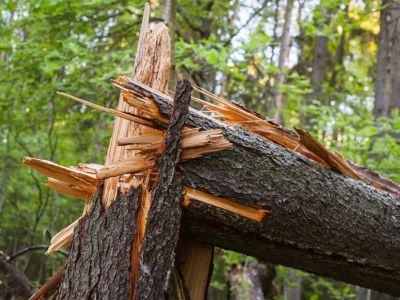Tree Branch Breaking
Brittle tree branches break when faced with strong winds, heavy snowfall, or ice, and they sometimes break under their own weight. The best way to keep tree branches from breaking is to keep them strong and healthy. This means watching them closely for disease symptoms, pruning them while they are young to encourage strong structure, and watering them often enough to prevent drought stress. Some problems with trees are beyond the homeowner’s control. Environmental factors such as pollution, acid rain, and climate changes can result in dry, brittle trees. Some trees resist the effects of pollution better than others. Urban gardeners should consider growing pollution-resistant trees such as sugar maples, arborvitae, little leaf lindens, blue spruce, and junipers.
Why Tree Branches are Weak
Trees that grow quickly are often not as strong as those with slow, steady growth. Avoid fast-growing types such as tulip trees, silver maples, southern magnolias, locust trees, bottlebrush trees, willows, and Russian olives when growing trees in areas where they might experience stress. Over-fertilizing trees encourages rapid growth and weak wood. Trees grown in healthy soil don’t need annual fertilization, and those grown in regularly fertilized lawns may never need additional fertilizer. Avoid fertilizing trees that are under stress from drought, insect infestations, or disease. A branch’s crotch angle is the angle between the main trunk and the branch. Branches with narrow crotch angles are weaker than those with wide angles and more susceptible to breaking. It’s best to remove branches with narrow crotches while the tree is young to prevent problems later. In general, a deciduous tree with a crotch angle of fewer than 35 degrees is too narrow. Drought stress also leads to weak, brittle branches, especially while the tree is young. Newly planted trees need a good soaking once a week, and for the first few weeks. Afterward, it’s best to water the tree during dry spells. Trees develop deep roots, so they don’t benefit from an occasional light watering. A good way to water a tree is to bury the end of the hose in the mulch and turn it on as low as possible. Let the water flow for several hours or until the water runs off instead of sinking into the soil.
